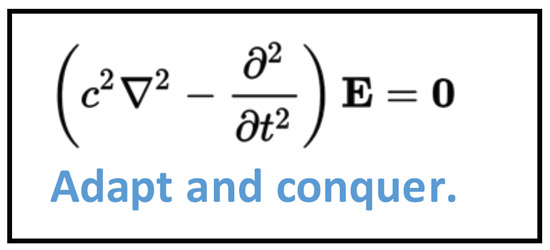When I joined Shell more than a few years ago [sigh], the onboarding process included being sent to Houston “to be trained as a geophysicist”. At the time, there were few schools of Geophysics – not in the narrow discipline of exploration seismology that an oil company was looking for – so they trained their own. Being formally ‘trained’ makes it sound like ‘the end’, but of course, it was just the beginning of an education that continues to this day. I love it.
The CSEG provides an important continuing education role promoting technical and professional excellence with courses, talks and publications relevant to the current state of the art. If you haven’t visited recently, please take a look – it’s all easy to access from the front page of the website http://cseg.ca/. Keep yourself informed and up-to-date by signing up and participating in the next technical luncheon talk. I look forward to seeing you there.

The world continues to need an increasing amount of energy resources and Canada is blessed with abundance. Our careers as geophysicists demand that we adapt our technical training to apply new ideas and technologies in a quick, efficient manner. Similar to this scribe pivoting from electromagnetic to acoustic wave propagation, today’s geophysicists must actively ‘adapt and conquer’, with a significant modern challenge being the range and application of technologies is far greater than in the past. The one constant in our profession is ‘change’, and the biggest opportunity right now is adapting to a world awash in hydrocarbons. Engineers and geologists are now driving the energy business and geophysical methods are not needed to uncover new exploration targets or figure out where the stuff is. What is needed – and what geophysicists can do – is to focus on reducing the exploitation costs for both hydrocarbon and alternative energy resources, measured by greater extraction efficiency and a smaller environmental and social footprint.
Your society showcases this changing role of geophysics, as this sampling of recent talks and papers demonstrates:
In the June issue of the RECORDER, Paul Webster coordinated several papers including his own on the latest application and results using fiber optics to record VSPs and microseismic events [1]. This technology promises to greatly reduce the cost of both data acquisition and hydraulic fracture stimulation monitoring, with increased accuracy, using the same fiber the engineers have been deploying for temperature profiles.
Also in June, Simon O’Brien presented an overview of the Quest Carbon Capture and Storage (CCS) project [2]. Quest is capturing more than one million tonnes of CO2 per year from the Scotford Upgrader and is the world’s first large-scale commercial application of CCS at an oil sands operation. He described how geophysical methods have played an important role in the geosphere component, with surface seismic and DAS VSPs being used to assess the development of the CO2 plume, and a microseismic array being used to measure any induced seismic activity.
In September, Ann O’Byrne showed us how to improve seismic data while decreasing costs, part of a study that was started in 2013, interestingly, before the (so-called) oil price collapse [3]. The result now is better seismic resolution of the reservoir and reduced cost outlay, with examples to prove it.
Also in September John Duhault showed how geophysics is “Maximizing Corporate Profits During Low Commodity Prices” with grounded examples that illustrate the business value of integrated geophysics through case histories [4]. John has a consistent mantra to ‘show the value of geophysics’, both as a founder of the VIG team and now the Vice President/President-Elect for the CSEG.
Earlier this year at GeoConvention, Tammy Willmer showed us how to reduce imaging costs with a swath seismic acquisition geometry, and brilliant imaging of the developing SAGD production zones on an oil sands lease over time [5]. These images allow accurate and profitable well placements that would be difficult to imagine without geophysics. Not surprisingly, the RE’s are demanding more: a follow-up repeat-acquisition is planned for winter 2016.
The energy industry may be in a dim light right now, but the outlook for geophysics is bright, driven by clever minds, insights, and technology. The future is brilliant.

References
[1] http://csegrecorder.com/editions/issue/2016-06
[2] http://cseg.ca/technical/view/the-quest-carbon-capture-project
[3] http://csegrecorder.com/articles/view/improving-seismic-data-while-decreasing-costs
[4] https://www.apega.ca/members/events/detail/182
[5] http://www.geoconvention.com/archives/2016/212_GC2016_Repeat_Seismic_Insights_Clearwater_SAGD.pdf











Share This Column